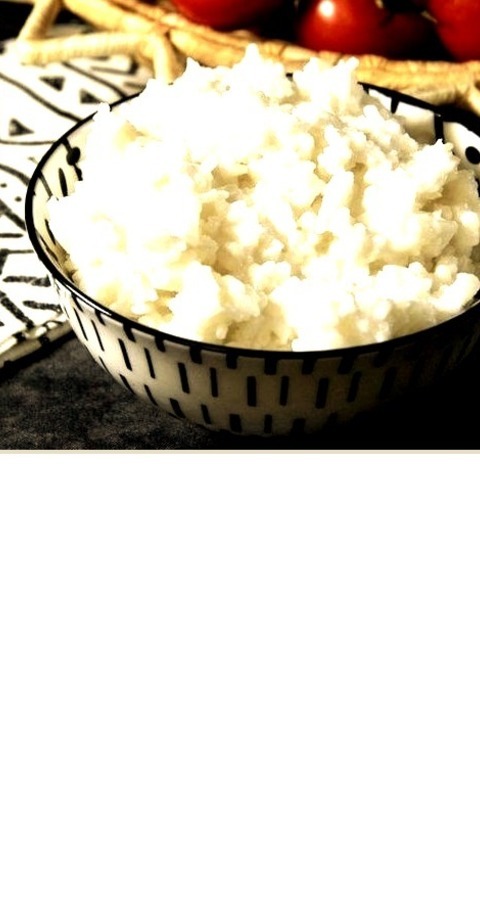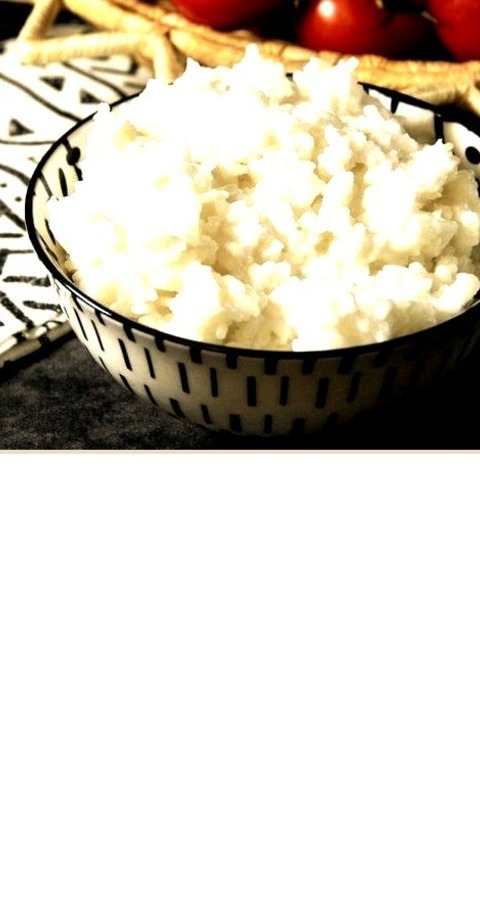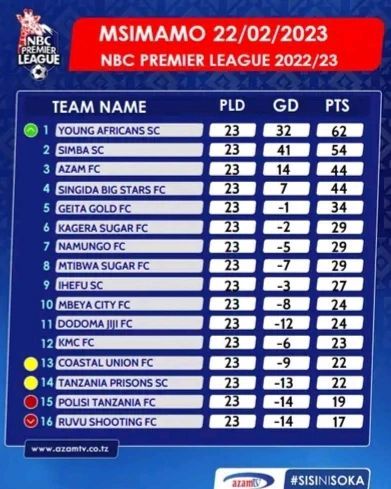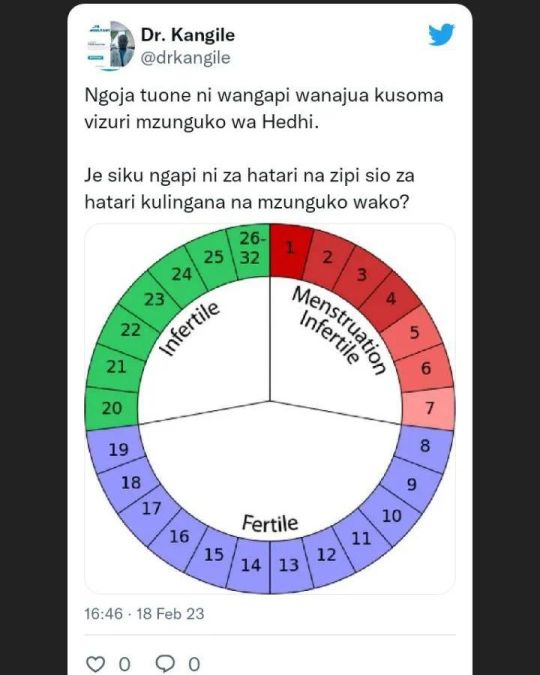#ngapi
Link
While there is friendly rivalry between Singapore and Malaysia over who makes better food, for one notable family in Singapore, the best sambal belacan (a spicy condiment made from shrimp paste) indisputably comes from Malaysia, though only from a very special source.
In 2019, Prime Minister Lee Hsien Loong conveyed his thanks to the Malaysian queen for regularly sending over her sambal belacan to his family. “Thank you for your warmth and kindness, sending my father (and me) your special sambal belacan all these years!” he tweeted on 28 October 2019. “I hope you enjoy making it as much as we enjoy eating it!” A few days before, Raja Permaisuri Agong Tunku Hajah Azizah Aminah Maimunah Iskandariah had shared on her Instagram account a letter written in July 2009 by former Prime Minister Lee Kuan Yew. He wrote that the six packets of sambal belacan she had given him were delicious. “I shared them with my two sons. They have all been consumed. It is the best chilli belacan we have tasted. Can my family have a few more?”1 Since then, she has been regularly sending her sambal belacan across the Causeway.
Sambal belacan is a regular accompaniment to rice in Malay, Eurasian and Peranakan meals. It is made by pounding toasted belacan with chillies and adding calamansi lime juice, salt and sugar to that mixture. While it is popular with many people, its key ingredient, belacan, has a somewhat malodourous reputation.
Hugh Clifford, who served as Governor of the Straits Settlements between 1927 and 1929, referred to belacan as “that evil-smelling condiment which [had] been so ludicrously misnamed the Malayan Caviare” in his 1897 account of the Malay Peninsula. He wrote that the coasts reeked of “rank odours” as a result of women villagers “labouring incessantly in drying and salting the fish which [had] been taken by the men, or pounding prawns into blâchan” throughout the fishing season. The stench was so strong that “all the violence of the fresh, strong, monsoon winds” would only “partially purge” the villages of it.2
In his book, A Descriptive Dictionary of the Indian Islands & Adjacent Countries (1856), John Crawfurd, the former Resident of Singapore, describes balachong (belacan) as:
“[A] condiment made of prawns, sardines, and other small fish, pounded and pickled. The proper Malay word is bâlachan [belacan], the Javanese trasi [terasi], and the Philippine bagon [bagoong]. This article is of universal use as a condiment, and one of the largest articles of native consumption throughout both the Malay and Philippine Archipelago. It is not confined, indeed, as a condiment to the Asiatic islanders, but is also largely used by the Birmese [Burmese], the Siamese, and Cochin-Chinese. It is, indeed, in great measure essentially the same article known to the Greeks and Romans under the name of garum, the produce of a Mediterranean fish.”3
Today, the Malay term belacan is commonly used in Singapore, Malaysia, Brunei and parts of Indonesia to refer typically to shrimp paste. In Thailand, Laos and Cambodia, it is called kapi, which is borrowed from the term ngapi (literally “pressed fish”) used in Myanmar, while it is referred to as mắm tôm or mắm ruốc in Vietnam.
Because it is rich in glutamates and nucleotides, belacan imparts savouriness to any dish, what is often described as “umami”. Other foods that are rich in umami include fish sauce, soya sauce, kimchi, mushroom, ripe tomato, anchovy and cheese.
Making Belacan
A 17th-century account gives a remarkably detailed description of making belacan. In 1688, the English privateer William Dampier encountered people making a paste of small fish and shrimps called balachaun during his visit to Tonkin (North Vietnam). He saw how this process produced nuke-mum or nước mắm (fish sauce) as well. His account, published in 1699, provides one of the earliest Western descriptions of making fish/shrimp paste:
“To make it, they throw the Mixture of Shrimps and small Fish into a sort of weak pickle made with Salt and Water, and put into a tight earthen Vessel or Jar. The Pickle being thus weak, it keeps not the Fish firm and hard, neither is it probably so designed, for the Fish are never gutted. Therefore in a short time they turn all into a mash in the Vessel; and when they have lain thus a good while, so that the Fish is reduced to a pap, they then draw off the liquor into fresh Jars, and preserve it for use. The masht Fish that remains behind is called Balachaun, and the liquor pour’d off is called Nuke-Mum.”4
While some versions of belacan use fish, it is held that the best ones are made from shrimp. In 1783, the Irish orientalist William Marsden, who worked for the East India Company in Bencoolen (now Bengkulu), wrote about the differences between black and red blachang in his book, The History of Sumatra:
“Blachang [belacan]… is a species of cavear, and is extremely offensive and disgusting to persons who are not accustomed to it, particularly the black kind, which is the most common. The best sort, or the red blachang, is made of the spawn of shrimps, or of the shrimps themselves, which they take about the mouths of rivers… The black sort, used by the lower class, is made of small fish, prepared in the same manner.”5
Fish and shrimp pastes have a very long history in Southeast Asia. Researchers believe that the techniques of fermenting fish most likely arose in areas on mainland Southeast Asia inhabited by communities who practised irrigated rice farming, had access to salt and faced seasonality in their fish stocks, which made preservation imperative. These techniques were then applied to the preservation of other raw ingredients such as shrimp and shellfish. They would later drift southwards throughout the rest of Southeast Asia.6 A Mon stone inscription from the first century CE provides the earliest record of the importance of ngapi in the Burmese diet. Ngapi manufacturers were also found in the list of occupations on a 12th-century stone inscription and a 15th-century marble monument from Myanmar.7 Inhabitants of the coastal cities of Pattani and Nakhon Si Thammarat (in present-day southern Thailand) used shrimp paste in their cooking as far back as the eighth century. These cities were then ruled by the Malay kingdom of Srivijaya from the island of Sumatra.8
“Evil”, “Nauseating”, “Noxious”
The smell associated with the making of belacan was noted by many observers. In the 1830s, the teacher, interpreter and writer Munshi Abdullah (Abdullah bin Abdul Kadir) visited a village market in Terengganu where he encountered what he perceived as a variety of “makanan yang busuk-busuk” (smelly, unwholesome foods), including tempoyak (fermented durian), different kinds of salted and fermented seafood products, petai (stink bean) and many types of sambal belacan. He criticised the lack of what he perceived as “makanan yang mulia” (wholesome foods) such as meat, ghee, eggs, butter and milk.9
In 1885, Scottish ornithologist Henry O. Forbes, wrote about his encounter with terasi and discovers, to his horror, that he had been eating it unknowingly for some time:
“Having got up rather late one Sunday morning… I was discomfited by the terrific and unwonted odour of decomposition. ‘My birds have begun to stink, confound it!’ I exclaimed to myself. Hastily fetching down the box in which they were stored, I minutely examined and sniffed over every skin… but all of them seemed in perfect condition. In the neighbouring jungle, though I diligently searched half the morning, I could find no dead carcase, and nothing in the ‘kitchen-midden,’… but at last in the kitchen itself I ran it to ground in a compact parcel done up in a banana leaf.
‘What on the face of creation is this?’ I said to the cook, touching it gingerly.
‘Oh! Master, that is trassi.’
‘Trassi? What is trassi, in the name of goodness!’
‘Good for eating, master; –in stew.’
‘Have I been eating it?’
‘Certainly, master; it is most excellent (enak sekali).’
‘You born fool! Do you wish to poison me and to die yourself?’
‘May I have a goitre (daik gondok), master, but it is excellent!’ he asseverated…
Notwithstanding these vehement assurances, I made it disappear in the depths of the jungle… I had then to learn that in every dish, native or European, that I had eaten since my arrival in the East, this Extract of Decomposition was mixed as a spice, and it would have been difficult to convince myself that I would come by-and-bye knowingly to eat it daily without the slightest abhorrence.10
Detailed written accounts like this provide insights into people’s attitudes towards belacan as well as the people who consume and produce it. A similarly degrading account came from the American naturalist William Hornaday. In his 1885 book, Two Years in the Jungle: The Experiences of a Hunter and Naturalist in India, Ceylon, the Malay Peninsula and Borneo, Hornaday remarked how the Chinese fishermen in a village at Sungei Bulu (most probably referring to Sungai Buloh), Selangor, “were engaged in catching prawns and making them up into a stinking paste called blachang”. He wrote: “Every house in the village is tumble-down, rickety and dirty beyond description, and the village smells even worse than it looks. The Chinamen live more like hogs than human beings; and, for my part, I would rather take up quarters in a respectable pig-sty than in such house as those are.”11
Enraged by a late-16th-century description of food written by Antonio de Morga (then lieutenant governor of the Philippines), José Rizal – the Filipino nationalist whose political writings inspired the revolution against the Spanish colonial government – wrote in 1890: “This is another preoccupation of the Spaniards who, like any other nation, treat food to which they are not accustomed or is unknown to them with disgust… This fish that Morga mentions, that cannot be good until it begins to rot, is bagoong and those who have eaten it and tasted it know that it neither is nor should be rotten.”12
Additionally, there were accounts about the supposed effects of belacan on health and sanitation leading to disease outbreaks. In Picturesque Burma, Past and Present (1897), British travel writer Alice Hart recounted that during a cholera epidemic in Yandoon, an English official imposed a ban on ngapi production because he was convinced that its stench exacerbated the situation. (At the time, some people still believed that diseases and epidemics were caused by miasmas or noxious vapours instead of pathogens or germs.) However, the order was so unpopular that it was eventually withdrawn, along with the officer involved.13
Hart also wrote that Catholic priests in Mandalay tested the theory that leprosy was caused by the consumption of decomposing fish. They conducted experiments in leper homes, which involved removing ngapi from the diet of the lepers in hopes that they might recover from the disease. The lepers, however, returned to their usual diet after a month as “their desire to taste ngapee again was greater than the hope of being cured”.14
The Belacan Trade
In 1856, with the passing of the Conservancy Act, trades carried out within the municipality that were defined as offensive and dangerous (including melting tallow, boiling offal or blood, sago manufacture, running brick, pottery or lime kilns, and storing hay, straw, wood or coal) had to be registered and licensed. The new law did not affect the belacan trade for four decades, but the Legislative Council of the Straits Settlements amended it in 1896 to include the “drying and sorting of fish, and the drying or sorting or storing of blachan”. With that, the owner of a belacan factory or store would need to register for an annual licence as it was a “manufactory or place of business from which offensive or unwholesome smells arise”.15 There were reports in Singapore of people being fined for storing belacan for trade in buildings without a licence within the municipality. For instance, in December 1897, a Chinese man named Lee Pow was fined 50 dollars for storing 280 bags of belacan in a house on Cecil Street without a licence.16
Although the belacan industry in Singapore and Malaya might not have been as economically important as the rubber, tin or even dried and salted fish trades, it was still significant. Belacan was a cheap provision for tin miners living in the major tin-mining areas such as Perak, Selangor and Sungei Ujong (now known as Seremban). They ate it with rice to make the meal more flavourful. The traveller and orientalist Thomas J. Newbold wrote in 1839 that Melaka traded items like belacan, salted fish, opium, specie, fish roe and tobacco for rice, tin, gold dust, ivory and ebony with states located in the interior. He also noted that Melaka exported a “considerable quantity of blachang” along with other commodities like hides, pepper, bricks and tiles as well as some ebony and ivory to Singapore.17
In his 1923 report, marine biologist David G. Stead states that belacan was “of very large importance” in the fish trade in many parts of Malaya. Stead had travelled along the Malayan coasts in the early 1920s to survey local fisheries and come up with recommendations for developing the industry. He explained that the fisheries in Province Wellesley (now known as Seberang Perai, a city in the state of Penang) and along the coasts of Perak and Selangor produced large quantities of belacan, whereas the growing fishery in Johor’s Kukup produced considerable amounts. He highlighted Bagan Luar, a fishing village located across from Penang Island, as the most important place in Malaya in terms of belacan manufacture and export. The other major site along the Strait of Malacca was Bagan Si Api Api.18 This town, which developed in the rich estuary where Sumatra’s Rokan River meets the Strait of Malacca, was home to an industrial fishery that produced a yearly average of nearly 30 million kilograms of fish and belacan between 1898 and 1928.19
Belacan in Singapore
Singapore played a vital role regionally as an entrepôt for belacan as well as other products like canned and salted fish.20 Singapore was the principal importer and exporter of belacan for the Straits Settlements. The bulk of the exports went to Java. Between 1920 and 1927, for instance, the Straits Settlements exported almost 16,000 tons of belacan to Java, amounting to almost $3,100,000. The next two largest amounts exported from the Straits Settlements via Singapore were to British India and Burma (about 8,400 tons), and Siam (about 6,700 tons) during the same period.21 Even after the dissolution of the Straits Settlements in 1946, Singapore continued its role as a major distribution centre for belacan; this time, it was for the Federation of Malaya.22
In 1900, there were 36 registered belacan factories within Singapore’s Municipal Area. The number, however, decreased over time; by 1939, only three were left.23 Maps produced between the 1930s and 1950s indicate three belacan factories at the Kallang Basin, with two located right by the Kallang River. Parts of these buildings appear to be submerged in water, suggesting that they were built on stilts. Each building also had an attached large wooden platform, most likely used for laying out and drying the shrimp paste.24
According to the Annual Report of the Fisheries Department for 1950 and 1951, the production of belacan in Singapore was negligible and much of the supply was imported from Malaya. The Federation of Malaya provided 600 tons of belacan for consumption within Singapore in 1950 alone.25 Even so, Tampines had a thriving belacan industry in the early 1950s that catered to local demand. Sungai Tampines and Sungai Api Api, two rivers that flow through Tampines and Pasir Ris and into the Strait of Johor, were rich in fish and udang geragau (small shrimps used to make belacan) at high tide.26
Lubuk Gantang, the confluence of three Sungai Tampines tributaries, was once abundant with these shrimps. This was a popular spot for villagers looking to catch and sell the shrimps fresh or to make them into belacan. However, this place no longer exists due to land reclamation. Over time, the belacan industry in Tampines declined not only due to reclamation, but also because people moved away from the area. By 1986, more than half of the villagers had moved into flats in new housing estates like Bedok, Hougang and Tampines.27
The udang geragau were caught using sondong (push-net), also known as selandang and sungkor.28 These used to be a familiar sight in nearshore areas like Siglap, Changi, Tampines and Seletar. Part-time or subsistence fishermen, including small boys, would typically use a smaller type of push-net. The Fisheries Survey Report (1959) describes the sondong as a net that is carried between two light wooden poles approximately five metres in length. “Shoes” made out of hardwood or coconut husk are attached to one end of the poles. The fisherman operates the sondong by standing between the poles and lowering the net into the water until the “shoes” reach the bottom. He then pushes it slowly along the seabed and lifts it after some time. With a few shakes, the catch goes into the bag-like end of the net. Longer poles were used by some fishermen who operated the net from boats in deep water.29
Despite ongoing urban redevelopment and reclamation, there was still a cottage industry of five households producing belacan in Kampong Tampines in the 1980s. In an interview with the Berita Harian newspaper in 1986, village resident 72-year-old Sapiah Osman, better known as Mak Piah, said that she had been catching shrimps since she was 35.
The widow started making belacan as part-time work to feed her family. She was usually at the shore by 6.30 am. Depending on the tide and weather, she might even be there earlier. On a good day, it did not take long for her sondong to be filled with shrimps. On other days, she would have to wait one to two hours to get a good catch.30 Like her, other fisherfolk made and sold belacan as a means to earn extra income for their families. Mak Piah sold her belacan for $1.
While belacan production still endures in other parts of Southeast Asia today, scenes of people catching udang geragau with their sondong and making belacan are long gone from Singapore. The shores are now void of the smell of drying fish and belacan, although one can still catch the aromatic whiff of belacan being toasted from homes and eateries.
RECIPE FOR BELACAN
In 1973, a belacan scandal rocked kitchens in Malaysia and Singapore. The authorities found belacan from Penang adulterated with a poisonous and carcinogenic dye, the prohibited substance Rhodamine B, which was used to give it an appealing reddish hue. This may have motivated some people to make belacan at home, hence this recipe by a Mrs Tan Bee Neo that was published in the New Nation newspaper a few years later.
Ingredients:
Use a Chinese tea cup as a measure. 10 heaped cups of fresh shrimp (udang geragau) and a little less than one cup of salt.
Method:
1. Do not wash the shrimps unless it is with fresh seawater. Sort through the shrimp to remove small fish, seaweed or other foreign matter.
2. Drain the shrimp and mix thoroughly with salt. Spread evenly on a large tray and dry in the sun for one day, or till damp-dry.
3. Pound the shrimp. The shrimps will still be moist and will easily bind into a paste. Shape into small cakes, the size of an egg and flatten.
4. Dry these in the sun for at least two days. Pound once more to get a finer paste. Re-shape into cakes and dry in the sun for two more days or more depending on the sunshine.
5. Check the texture for smoothness, you would probably have to re-pound the belacan.
6. When satisfied that the belacan is suitably fine, that is, the shrimps are indistinguishable from each other, shape the paste into cakes and leave once more in the sun for at least four days until the cakes are quite dry.
7. Belacan keeps well indefinitely, but be sure to dry the cakes in the sun every now and then to remove moisture that may have collected in storage.
RECIPE FOR SAMBAL BELACAN
This recipe is taken from Rita Zahara’s cookbook, Malay Heritage Cooking (2012).
Ingredients:
10g
belacan
7 red chillies
3 red bird’s-eye chillies
Salt to taste
Sugar to taste
2 limes, juice extracted, zest thinly sliced
Method:
1. Heat a small frying pan and dry-fry belacan for a few minutes until fragrant.
2. Using a mortar and pestle, pound belacan with chillies until well combined. Remove to small bowl.
3. Season with salt and sugar to taste. Add freshly squeezed lime juice and lime zest.
#Southeast Asia#Malaysia#Indonesia#food cw#Singapore#Philippines#Burma#Myanmar#Brunei#Brunei Darussalam#Cambodia#Thailand#Laos#Belacan#Sambal Belacan#Ngapi#Kapi#Trassi#Bagoong#Shrimp paste#Recipe#History#long post
67 notes
·
View notes
Text
Cutie and her lover sometimes piss during their sex play
Minha Prima Casada Fica Bebada, No Caminho Eu Desvio Para o Hotel
Deeper. Husband on the Phone with his Wife While Cheating with Nia Nacci
Desi Village hot fucking sex
Big Ass & Big Tits Latina Wife Shared With a Stranger For The First Time
Gloria Gags depraved rough sex starts
maria Gabriela Yegres (Puta Venezolana)
Gay college blow job and rocker guy naked porn Welcome back to
Femdom puts boyfriends dick in chastity cage
Wife Violet Starr shares her husband with a horny teen Elena Koshka
#nonfastidious#coniferin#shillelaghs#aftwards#syncarpy#cynism#COTS#epimerizing#Taiden#ngapi#Bunyoro#abeigh#year#Tabebuia#basileis#double-time#tripodical#Braillewriter#shoreface#Emiliano
0 notes
Photo

Recipe for Burmese Coconut Rice
This easy Burmese coconut rice is simmered in a fragrant, sweet and savory mixture to impart tons of flavor. 2 cups coconut milk, 1 tablespoon grated onion or to taste, 1 pinch white sugar, 1.5 cups water, 1 pinch salt, 3 cups uncooked jasmine rice rinsed and drained
0 notes
Photo

Burmese Coconut Rice
This easy Burmese coconut rice is simmered in a fragrant, sweet and savory mixture to impart tons of flavor.
0 notes
Text
A Deadbeat's Journal 5
A Jotaro kujo x blackfemreader fic
February 18 20XX,
Kongowea is not for the weak . In actuality , it's really not for anyone who’s trying to have a positive day because my oh my, the trials you will endure as you navigate through the never ending abyss that is this market will leave many in shock ,in tears almost .
Despite the trials, the cheap groceries are the only sweetener to this otherwise bitter endeavor hence the trip .I needed to remind Jotaro of our ground rules;
“Don’t touch anything , don’t look at anything for more than a second and most importantly , don’t speak .” I sharply said.
Here’s the deal, consider Kongowea as a sort of free range market where prices can be reasonably bargained at .However , some of the unspoken rules include that you should never speak in English or even have a skin tone closer to the korean foundation shade range(paper) or you will get scammed. Moreover, you shouldn’t seem completely interested in what the merchant is offering, otherwise you may end up coughing a not so pleasant sum from your pocket . These are the most revered rules that I’ve picked up whilst shopping here.
However, the most important rule that I have never shared to anyone is that I usually go on the least active day of the week which is when the trailers are offloading new goods and sellers are usually even more lenient with their price tags.Thats why we were there at 6 am on a Wednesday morning.
“Don’t worry about me , I can barely keep my eyes open.” Jotaro sleepily retorted whilst attempting to hold back a yawn.
We found a parking spot and I took the reusable bags . I told Jotaro to keep his hoodie up. The less people notice the pasty, bulking ,mass of a man , the better.
“Wouldn’t people be staring at me more?”
“No cause aside from a sidelong glance , a working kenyan will always mind the business that pays them.”
He scoffed at that and let me lead him to the fruits and vegetables market . The government decided to place a toll tax of 30 shillings per person as if they don’t steal enough from us anyways.
When we walked in , as expected only a few of my most trusted merchants were open. I immediately began purchasing .Luckily we purchased almost everything needed within the first 20 minutes .The only thing left was a pumpkin and two squashes which Jotaro desperately wanted.I politely asked one of the merchants to direct me to any of the merchants selling the required and she gestured at a young man two stalls across her .
The man , noticing we were headed to his stall immediately called us over.
“Ngapi?”(How much)
“150 nzima”(a whole pumpkin at 150)
“Ndugu si unipunguzie?mwisho wasemaje?”(Brother can’t you make it a bit cheaper, what’s your final offer)
“Mwisho 120”(final price 120)
I was too tired to go back and forth and it was too early to be arguing about money that Jotaro clearly had and didn’t mind spending . We ordered 2 and 5 squashes despite me informing him that I don’t particularly enjoy either tuber and he’ll have to find a way to eat it on his own . Just as I thought that the trip was very peaceful, the merchant broke the stream of consciousness with the usual question I get asked whenever Jotaro’s around.
“Huyo mzungu…kwani ni bwanako?”(Is this white man your husband?)
“Hata , ni cousin wangu wa mbali lakini” (No he’s my distant cousin)I lied.
“Heh, kwa sababu nimeshangaa, kwani wewe pia umekuwa kama malaya wa siku hizi”(Yeah, cause I was wondering when you had become like these new prostitutes)he said with a slight laugh.
Mind you, I don’t even know this man .I was genuinely about to bash his head in one of his overpriced pumpkins as the utter audacity to say such a statement not only in front of a customer , but as though it's meant to be a compliment . I immediately gave him his money and walked away cause my hands were itching for a beatdown and I already knew where that road leads to.
Jotaro ,who noticed my stiffness after the foolish man’s remark , opted to say nothing till we entered the car . Once he had properly placed the groceries and sat down he slowly asked ;
“What happened?”
“He told he that he would have thought that I was a white man’s whore if i hadn’t said that you were my distant cousin”
Jotaro slowly closed his eyes , deeply pondering on what I just said before saying ;
“I’m sorry that I constantly put you in these shitty situations simply by being around you. To be honest, I feel like beating him to bloody black and blue but I can also write a 2000 essay on why that's a bad idea.” He said remorsefully, with a tinge of anger.
This is one of the few moments that I see Jotaro saddened for my sake . And to mark the occasion I gave him an even rarer hug as slight comfort.
“It’s okay, as they say in swahili, ‘All your dues will be paid on this very earth.’He’ll get what’s coming for him.”
“A hug , words of wisdom and you didn’t hit someone back for insulting you. Maybe I should start going to therapy too.” He joked whilst coughing the engine.
We ended up dumping the groceries on the counter to sleep off the morning haze. Washing and shelving them took an hour and half but despite the quiet way we worked around the five bags of groceries , I felt the most comfortable being around him than I had in the past 2 months we’ve been together.
I'm also proud of myself . Punching the guy would have meant that I let my ego, once again, be controlled by external factors rather than internal.It was a nice esteem boost, one that I got from within rather than the usual exterior.
prev masterlist next
3 notes
·
View notes
Text
Somo: UMUHIMU WA TOBA YA KWELI, MAUNGAMO YA KWELI NA MSAMAHA WA KWELI
°°°°°°°°°°°°°°°°°°°°°°°°°°°°°°°°°°°°°°°
Fuatilia YouTube.
https://youtube.com/@Rwizakakiza?si=ePUUNm9ccp8shcVp
Sehemu XII.
HITIMISHO
> Msamaha unapaswa kuwa mfumo wa maisha ya Mkristo.
.....Kisha Petro akamwendea akamwambia, BWANA, ndugu yangu anikose mara ngapi nami NIMSAMEHE? Hata mara saba? YESU akamwambia, Sikuambii hata mara saba, bali hata saba mara sabini.
.....Mathayo 18:21 - 22....
>Licha ya kutoa na kutangaza Msamaha, Pia tunapaswa kuomba Msamaha kwa ajili ya makosa yetu kwa MUNGU na kwa jirani. Jukumu letu ni kusamehe tu, siyo kulazimisha kusamehewa au kupokelewa Msamaha wetu.
> Msamaha lazima utangazwe wazi wazi, Msamaha ni vyema ukiambatana na KUWAOMBEA MEMA na KUWABARIKI WALIOKUKOSEA.
> Kwako wewe UNAYESHINDWA kabisa kusamehe Mwone kiongozi wako wa kiroho au NITAFUTE kwa namba ya simu iliyoko hapo chini, kwa ushauri na msaada wa kiroho.
> MIFANO michache ya waliofanikiwa kusamehe ingawa walitendewa ukatili mkubwa lakini wakasamehe.
1.....YUSUFU aliwasamehe ndugu zake ingawa walimchukia na kumuuza
......Mwanzo 45:3-8.....
2.....MUSA aliwasamehe wana wa Israel, ingawa walimchosha, akuacha kuwaombea baraka na rehema kwa MUNGU.
......Kutoka 32:11-14......
3......DAUDI alimsamehe Sauli ingawa Sauli alikusudia kumuua Daudi.
.......1Samweli 24:1-8.....
4.....YESU MWENYEWE alitusamehe na anaendelea kutusamehe ingawa tunaendelea kumwaasi na kumkosea mara nyingi, lakini YESU hayupo tayari kutuacha anatusamehe kabla hatujamwomba Msamaha Ingawaje sisi tunauzuia Msamaha wake. Petro alimkana YESU, lakini YESU hakumbeba Petro ila alimsamehe na kumpatia majukumu ya kufanya.
...... Yohana 21:15-17....
>Toba ya kweli ina majuto ya kweli yanakupeleka kwenye maungamo ya kweli yaani kuachana na dhambi, ukiamini Umesamehewa, kwa kuwa na wewe UMESAMEHE wengine, Amina.
Rejea
“So when they had finished breakfast, JESUS said to Simon Peter, “Simon, son of John, do you love Me more than these [others do—with total commitment and devotion]?” He said to Him, “Yes, LORD; You know that I love You [with a deep, personal affection, as for a close friend].” JESUS said to him, “Feed My lambs.”
.....John 21:15.....
Ev. Erasmus Pascrates Kakiza
(WhatsApp: +255 782 546 914)
@2024 The year of my shining.
0 notes
Text
Simba vinara, Al Ahly ni vibonde tena?
Baada ya kupandwa na hasira za kuchapa chapwa na Simba, hatimaye Al Ahly walimsajili nyota Luis Miquissone…..
ZIMEBAKI siku ngapi? Bila shaka msomaji jibu unalo kuwa Simba watapepetana na Al Ahly lini na wapi. Kwa mara nyingine tena mabingwa wa soka wa zamani wa Tanzania, Simba wanatarajiwa kuingia dimbani kupimana ubavu na mabingwa wa Misri klabu ya Al Ahly katika mchezo wa robo fainali ya…

View On WordPress
0 notes
Photo

MSIMAMO: NANE…..!!! Je, bado mechi ngapi za ubingwa? #Standing #Msimamo #LeagueTable #MsimamoWaLigi #AzamSports1HD #NBCPL #NBCPLUpdates #NBCPremierLeague #SokaLetuBambam #SisiNiSoka Bado mechi 4 🙏🙏😂😂 https://www.instagram.com/p/Co-D2WfqlHD/?igshid=NGJjMDIxMWI=
#standing#msimamo#leaguetable#msimamowaligi#azamsports1hd#nbcpl#nbcplupdates#nbcpremierleague#sokaletubambam#sisinisoka
0 notes
Text
Sarafina sehemu ya kwanza
SARAFINAMtunizi : René Mpole Simbamahali : Congo KinshasaNo : +243971714012S E H E M U : 01” ebu nambie tu ukweli hiyo mimba umeitoa wapi? lah sivyo nakuua hapa hapa Penina ”’ Jamani utaniuaa tu bure mume wangu ni rudie Mara ngapi jamani ? hili uniamini. sijawai kukusaliti mume wangu , wala sijawai kabisa kukutana na mwanaume yeyote yule kimwili zaidi Yako tokea umenioaa Naomba uniamini…

View On WordPress
0 notes
Photo

Ngoja tuone ni wangapi wanajua kusoma vizuri mzunguko wa Hedhi. Je siku ngapi ni za hatari na zipi sio za hatari kulingana na mzunguko wako? (at Dar es Salaam, Tanzania) https://www.instagram.com/p/CozlTxptMDB/?igshid=NGJjMDIxMWI=
0 notes
Photo

JUMLA YA VIDEOS 20 TAYARI ZIPO KWENYE CHANNEL YETU YOUTUBE, UMEITAZAMA MARA NGAPI? https://youtube.com/@makazimpandatanzania7262 https://www.instagram.com/p/Cm573A2tyEy/?igshid=NGJjMDIxMWI=
0 notes
Photo

MUPYAA IMEFIKA SAIZ OFCN NA REMOTE YAKE NA STAND ZAKE NIAMBIE UNA NCH NGAPI TUBADILISHANE TUONGEZEANE HELA ZA SIKUKUU NA MNYAKUGULA MNYAKUGUSA KARIBUNI IMEFIKA HHAPA HAPA OFCN KWETU IRINGA KIHESA MWANG'INGO UKIFIKA ULIZA ABUNERI MJASIRIAMALI AU MNYAKUGULA MNYAKUGUSA HATA KUKU ANAKULETA AU NIPIGIE MWENYEWE MOJA KWA MOJA NA WHTSAPP KWA BIDHAA ZAIDI NA PICHA YA KILE UNATAKA PIGA 0757510219 (at Mwang'ingo Kihesa) https://www.instagram.com/p/CmEkdPyszHe/?igshid=NGJjMDIxMWI=
0 notes
Text
MUUZA CHIPS (74)
Jina: MUUZA CHIPS
Mwandishi: MoonBoy
SEHEMU YA SABINI NA NNE
ILIPOISHIA...
"aahhhh nini chidi jamani,.. Nitakupata pesa yeyote ile"
"kiasi gani… Mana nataka ukinipa pesa nisimuwaze mdogo wako, tena hata kuja hapa sintakuja"
"kwani we wataka milioni ng
Jina: MUUZA CHIPSMwandishi: MoonBoy
SEHEMU YA SABINI NA NNEILIPOISHIA…
“kiasi gani… Mana nataka ukinipa pesa nisimuwaze mdogo wako, tena hata kuja hapa sintakuja”
“kwani we wataka milioni ngapi chidi,.. Nitakupata”
Yaani chidi kuskia jambo la milioni, alizidi kujilamba mdomo huku akipiga mahesabu amtajie kiasi gani
KAMA UNATUMIA APP WAKATI UNAFUNGUA KUNA MATANGAZO YANATOKEA YAGUSE WALAU KILA…

View On WordPress
0 notes
Video
aki nirawaambiya mara ngapi hi sio Ile Kanzu yangu ya Huduma wajemeni? https://www.instagram.com/p/CifekEWqhNZ/?igshid=NGJjMDIxMWI=
0 notes
Text
Https://www.youtube.com/@Rwizakakiza
(Share &. Subscribe)
TUMAINI JIPYA
NDANI YA YESU KRISTO.
Ni
KUPATA HURUMA ZA MUNGU
......Ni huruma za BWANA kwamba hatuangamii, Kwa kuwa rehema zake hazikomi. Ni mpya kila siku asubuhi; Uaminifu wako ni mkuu.....
......Omb 3:22-23....
Kwenye maisha yetu ya kila siku, MUNGU amekuwa mwenye huruma sana kuliko tunavyofikiri. Unaweza Usione huruma zake lakini tafakari kwanza;
1. Mambo mangapi MUNGU amekufundisha au amesema na wewe umeyafanyia kazi?
2. Madaftari, audio na vitabu vingapi unavyo vinavyomuhusu MUNGU na huvisomi?
3. Umesikia mahubiri kila wakati, lakini Kwanini huchukuhi hatua za kubadilika?
4. Je watu wangapi wanalia au wanateseka kwa ajili yako kuwatenda?
5. Wewe uliyekata tamaa, Mara ngapi MUNGU amesema na wewe kwamba "USIOGOPE, MIMI NIPO PAMOJA NA WEWE NIKUOKOE" nawe ukakubali kutii sauti yake?
Ni huruma na rehema za MUNGU hatuangamii, lakini tusiendelee kukaidi, kuna kikomo cha huruma ya MUNGU, maisha yako yatakapotengana na mwili utaenda kutoa hesabu ya yale uliyoambiwa na MUNGU, uliyejifunza mengi utadaiwa mengi.
Ingekuwa heri usikie sauti ya MUNGU kwa makini na ufanye maamuzi ya kubadilisha maisha yako kumwelekea MUNGU.
Huruma ya MUNGU ipo kwa kila mtu, kwako wewe uliyekata tamaa na maisha, maisha umeyaona magumu, MUNGU anakuona unapopitia kubali kujikabidhi kwake atakuhurumia, hata kama ni muda mrefu umepita, bado MUNGU atakuhurumia tu.
Wewe unayeona ni mdhambi kuliko wote, Leo tambua ipo huruma ya MUNGU, MUNGU anasamehe bila kujalisha wingi wa dhambi ulizonazo, Ukikubali kumgeukia atakusamehe, Rudi ipo huruma ya MUNGU sasa.
Rafiki yangu Kimbia dhambi, Kimbia makato wa tamaa, Kimbia maneno na taratibu za ulimwengu, (Kimbia zinaa, Kimbia kiburi na majivuno, Kimbia matambiko na Ibada za giza, Kimbia maseng'enyo na Uongo, Kimbia dhuruma na fitina, Kimbia Uchafu wote, ushirikina wote, uchawi na Uganga,.... nk)
Bali
IKIMBILIE HURUMA YA MUNGU inayopatikana kwa njia ya imani kupitia YESU KRISTO, mwamini leo nawe utarehemiwa, Amina.
Rejea
It is because of the LORD’s lovingkindnesses that we are not consumed, Because His [tender] compassions never fail. They are new every morning; Great and beyond measure is Your faithfulness.
.....Lamentations 3:22-23.....
@2023 the greatest Glory for me.
1 note
·
View note
Text
MCHIZI PETRO PINGU FEATURING.KING RABBIJOH-NENDA LYRICS.
This song was written and recorded by Mchizi Petro Pingu and King Rabbijoh on date 20th, September 2021,It was recorded at Gravity Records & 360 Empire KITENGELA NAIROBI KENYA,THE SONG WAS PRODUCED & MUSTARD BY ADEL AND TY,
''The song is for teaching purpose . # #teaching #kenya #love #kingrabbijoh #mchizipetro #Adel #Ty #kitengela #music #dashfireboy #mchizipetropingu
The song has been illustrated the lover who broken one another heart for someone else and is seeking to be sheltered back, but found non but no space.'''''
'''''The Lyrics Of The Song Are,:''
''''''INTRODUCTION''''''
King Rabbijoh
Mchizi Pingu
Nenda Mama
Changodoa Mwenye Tamaa
KING RABBIJOH''''''
CHORUS '''''
Ringa Mama Ringa Ringa Nkuskie
Nenda Mama Nenda Nenda Usinifikirie
Ringa Mama Ringa Ringa Ringa Nikuskie
Nenda Mama Nenda Nenda Nenda Usinifikirie
MCHIZI PETRO PINGU''''''
VERSE 1
Kicheche Waapenzi Nakucheza Ka Dance
Sikuiz Skufl Skuhisi Siitaji Lako Penzi
Kwako Niling'ata Ka Nyele
Ukanicheza Ka Zeze
Uliipenda Ukaipakata Nikakupa
Mate Denda Ukaenda Natena Umerudi
Aaaah Unanicheza Kama Toy
Lem Say Baby No Siitaji Lako gonoh
Kila Date Ulipora Zote Doo
Uliipenda Wenye Dola Nono
Sasa Sina Mbota Kitambo
Kichuna Mi Nisharokota
Pole Basi Mbasi Fisi Chako Choo
Ka Ibilisi Ngumu Kumiliki Hunibambi Nakudisi
Kaa Koro Unaniwasha Unanichoma Kwenye Koo Halaaah Lem Go Ka Shabiki Tupatane Kwenye Flo
KING RABBIJOH
CHORUS '''''
Ringa Mama Ringa Ringa Nkuskie
Nenda Mama Nenda Nenda Usinifikirie
Ringa Mama Ringa Ringa Ringa Nikuskie
Nenda Mama Nenda Nenda Nenda Usinifikirie
KING RABBIJOH
VERSE 2
Sema Baby Sema Sema Sema Unachotaka
Yote Nilkupa Pocho Kama Takataka
Nairobi Mombasa Popote Ulipotaka
Easter Life Ukifakia Hata Lavalava
Nini Hukugeti Sema Ni Regret
Ngapi Hukuspendi Sema Usipretend
Ulikuja Na Matuta Sasa Ni Abuja
Ringa Mama Ringa Ringa Ringa Nikusikie
Nenda Mama Nenda Nenda Nenda Usinifikirie
The Picture The Money Now I Get The Picture
Ukicheki Mafansi Gari Ipate Paniture
Badala Ya Kuomoka Ukanza Kuzama
Easy Make Sezi Rudi Enzi Zama
Life Inaendelea Dada Wewe Kazana
Nilijaribu My Best Lakini Mungu Anajua
Mimi Nawe Hatuendani
KING RABBIJOH
CHORUS '''''
Ringa Mama Ringa Ringa Nkuskie
Nenda Mama Nenda Nenda Usinifikirie
Ringa Mama Ringa Ringa Ringa Nikuskie
Nenda Mama Nenda Nenda Nenda Usinifikirie
MCHIZI PETRO PINGU''''''
1ST VERSE 3
Ka Daladala Wanapanda Wanashuka
Ka Wiggy Unasukwa Unatupwa
Penzi Pilpil Tamu Inawasha
Hili Penzi Bwana Ndizi Unakula Unatupa Ganda
Penzi Kama Fegi Unavuta Unatupa Filter
KING RABBIJOH'''''
2ND VERSE 3
Pingu Umesusa
Yalikua Tym Ama Juza
Sikuiz Niushenzi Yalikufa
Izo Enzi Hahahaha
KING RABBIJOH
CHORUS '''''
Ringa Mama Ringa Ringa Nkuskie
Nenda Mama Nenda Nenda Usinifikirie
Ringa Mama Ringa Ringa Ringa Nikuskie
Nenda Mama Nenda Nenda Nenda Usinifikirie
the end of the lyrics.
'''''''SONG TITLES:'''''''
''Nenda/ Nenda Mama/ Ringa Mama''
'''''''STUDIOS''''''
':''Gravity Records, ''And 360 Empire
'''''''LOCATION''''''':
''Kitengela Nairobi Kenya'' '''''''
ARTISTS:''''''
Joshua Vita Mwanyasi''''''''
"""(King Rabbijoh)""" &
""Peter Mwambito Mkirema""""
""""(Mchizi Petro Pingu/Dashfireboy)'''''''
''''''PRODUCED AND MASTERED BY:''' '''
''Adel Checkrom And Ty
👇🎧
Nenda https://lnkd.in/dRYfrpZf










0 notes